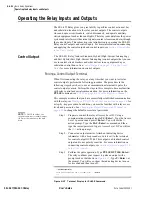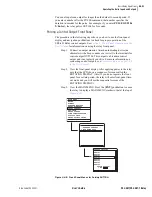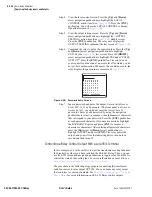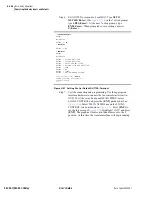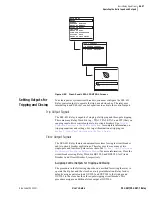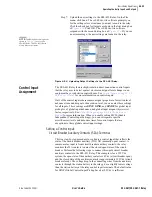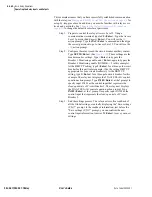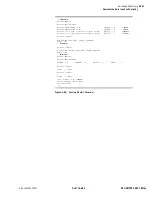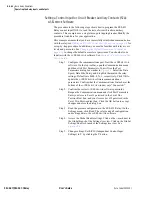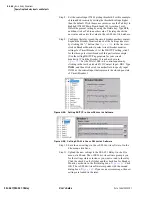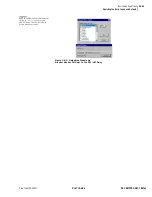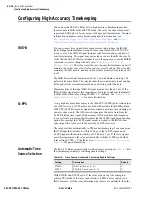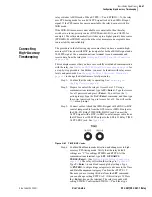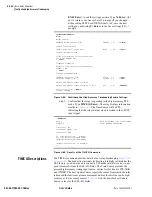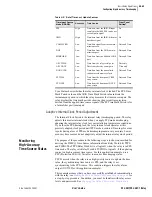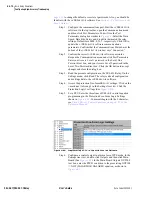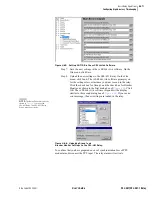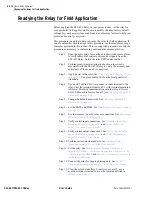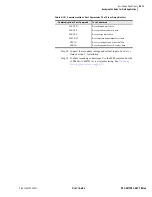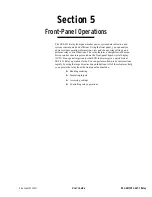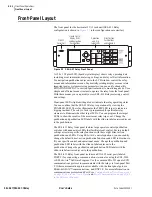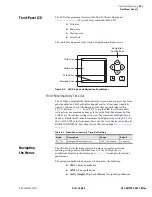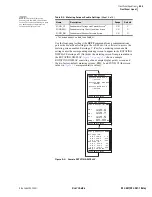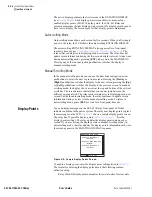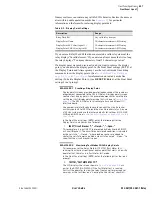
U.4.66
SEL-421/SEL-421-1 Relay
User’s Guide
Date Code 20020501
Basic Relay Operations
Configuring High-Accuracy Timekeeping
Configuring High-Accuracy Timekeeping
You can use the SEL-421 Relay in two high-accuracy timekeeping modes;
these modes are IRIG mode and PPS mode. The relay can time-stamp event
reports and SER data to 10
m
s accuracy with a proper time reference. For more
information on high-accuracy timekeeping and state estimation, see
Oscillography on page A.3.8 in the Applications Handbook
, and
Time-Synchronized Measurements in the Applications Handbook
IRIG-B
You can connect time signals from many sources that produce the IRIG-B
(Inter-Range Instrumentation Group-B) time code format (SEL-2030, GPS
receiver, etc.). The IRIG-B signal includes code for time-of-day and day-of-
year time stamping. The signal does not include a code to identify the year. To
verify that the SEL-421 Relay calendar is set to the proper year, use the
DATE
command to view or change the date (see
). The relay stores the year in nonvolatile memory and will
maintain the proper year even if relay power cycles off and on. The relay also
maintains the time, month, and day in nonvolatile memory while relay power
is off.
The IRIG-B serial data format consists of a 1-second frame containing 100
pulses divided into fields. The relay decodes the second, minute, hour, and day
fields and sets the internal time clock upon detecting valid time data.
Maximum jitter of the input IRIG-B signal must be less than
±
3 ms. If the
IRIG-B input signal meets this requirement, the relay switches automatically
to IRIG mode when relay setting ETIRIG := Y (default). See
for more information.
1k PPS
A very high-accuracy time source is the 1000 PPS (1k PPS) pulse train output
of a GPS receiver. For PPS mode, use both GPS satellite-locked IRIG-B and
1000 PPS (1k PPS) time code signals for extremely accurate time stamping of
power system events. The GPS receiver generates this pulse train from the
1k PPS satellite time signal. High accuracy GPS-based time and frequency
receivers from various manufacturers provide the 1k PPS signal as an ordering
option. Be sure that the 1k PPS signal output is locked to the IRIG-B time
code output (this is the case in the majority of GPS receivers).
The relay switches automatically to PPS mode timekeeping if you connect an
IRIG-B input that is stable to within
±
200
m
s of the 1k PPS signal, and a
1k PPS signal with absolute stability of
±
500 ns (0.5
m
s). If the two signals
meet this requirement, the relay automatically switches to PPS mode when
relay setting ETPPS := Y (default). See
Automatic Time Source Selection on
for more information.
Automatic Time
Source Selection
The SEL-421 Relay automatically switches time source inputs.
lists
the timekeeping automatic switching enable settings.
With ETIRIG and ETPPS set to Y, the relay at power up first attempts to
achieve PPS mode. If the relay cannot find a 1k PPS source coupled to an
IRIG-B source, or if the relay determines the sources are unreliable, then the
Table 4.8
Time Source Automatic Switching Enable Settings
Setting
Description
Default
ETIRIG
IRIG Time Source (Y, N)
Y
ETPPS
PPS/IRIG Time Source (Y, N)
Y
Summary of Contents for SEL-421
Page 8: ...This page intentionally left blank ...
Page 30: ...This page intentionally left blank ...
Page 110: ...This page intentionally left blank ...
Page 204: ...This page intentionally left blank ...
Page 284: ...This page intentionally left blank ...

